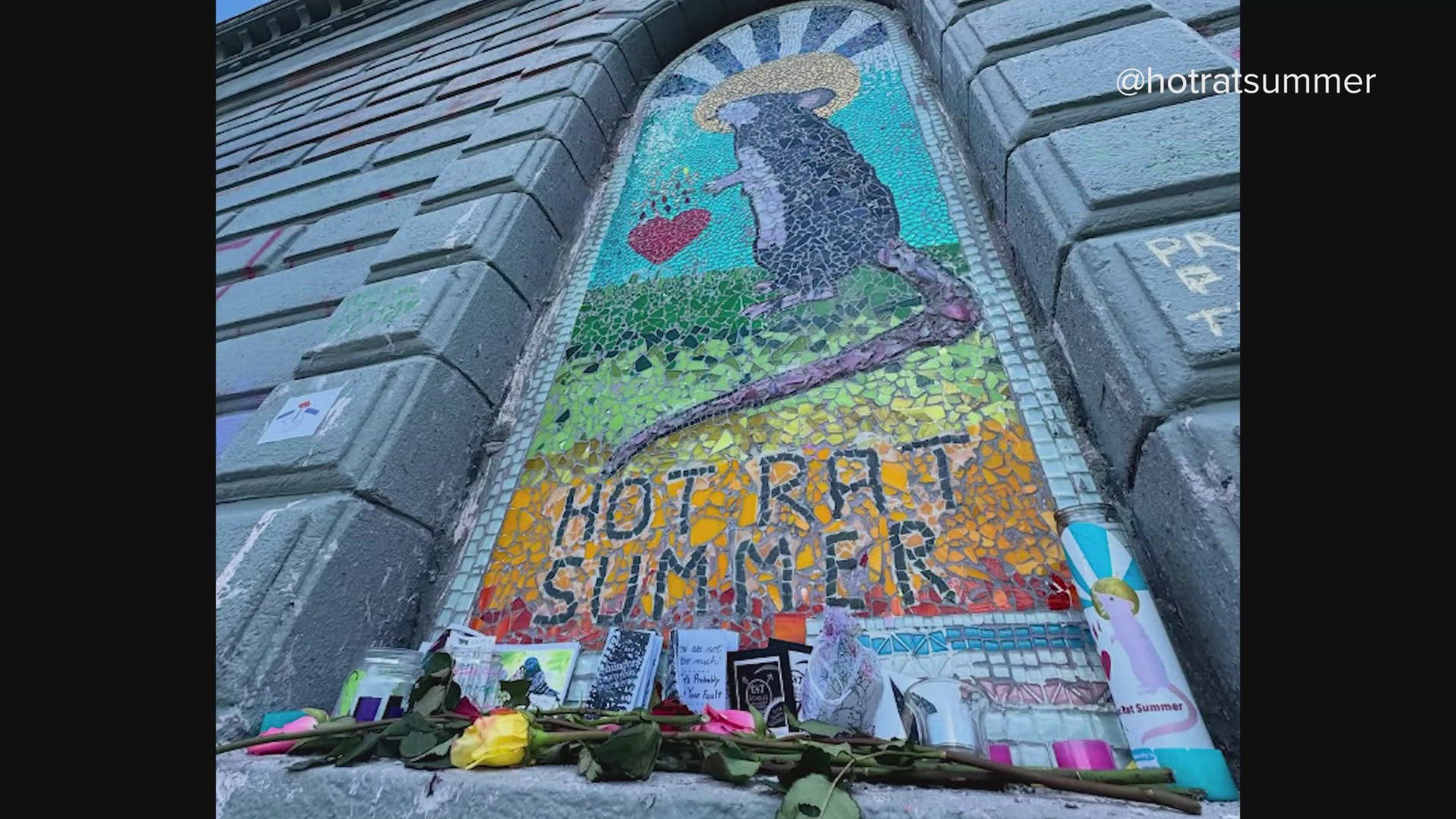SEATTLE — When the “Hot Rat Summer” mosaic vanished under a layer of paint, it stirred up drama at Cal Anderson Park, just as the city signed a graffiti fine into law.
The depiction of a sunbathing rodent popped up on a city-owned utility building in Cal Anderson Park. It became of symbol for some in Seattle who shared it online, leading it to go viral. To some, it's a celebration of trans identity, depending on who you talk to.
“I can’t believe it’s not there anymore,” said Remington Michelle Stone, who recently moved to Seattle from Los Angeles. “Public feedback is important because when you cover up something like that, that obviously had a lot of meaning to a lot of people.”
The mosaic found itself caught in the middle of Seattle’s new graffiti fine: up to $1,500 for anyone caught tagging property without permission. But this is different, rat lovers said, including someone dressed as “Saint Rat,” who showed up to a recent Seattle City Council meeting.
“The city kept coming out and painting over me, and then people would bring me offerings, and I wasn’t even there.”
It’s true — neighbors left tributes.
Seattle’s Director of Graffiti Programs and Initiatives Paul Jackson said that while the rat may have been beloved by many, it wasn’t allowed.
“It’s a city building that is owned by Seattle Public Utilities. It’s in a Seattle park,” Jackson said. “It’s a city-owned asset. It’s just like a bridge. It’s just like anything else on the sidewalk. It belongs to the city, who has to maintain and manage it.”
Jackson said that city crews were originally told not to abate the artwork.
“We gave direction not to abate it. We were looking for the artist so we can try to have an agreement. We have not been successful in that," Jackson said Wednesday.
Still, Saint Rat was freed — scraped free from a layer of paint by community members. Councilmember Joy Hollingsworth, who represents Capitol Hill, helped uncover the artwork herself.
“Capitol Hill is a phenomenal neighborhood full of artists that we want to continue to elevate,” Hollingsworth said. “That's why it's important. Not tagging. It's not that type of artist.”
Jackson clarified that there’s a path for murals like this to become city-approved but it requires an agreement between the artist and the city.
“We support agreed-upon art. And what that means is, we work with an artist. They provide us with an idea and then a concept. We make sure it fits within the community. And then we have what we call a memorandum of agreement. Everybody knows who's responsible for it. The artist would be responsible for maintaining it, and we go from there.”
Jackson said city employees are working with community members to find out who's behind the artwork, and if they're open to creating more pieces.
Seattle officials are urging the anonymous artist to reach out through the One Seattle Graffiti Plan website, where there’s a “sign up to paint” link. Jackson said the city is also in touch with Nathan Everett, a well-known Seattle artist (who goes by “Saya”) and graffiti coordinator with the city, to help make the connection.

